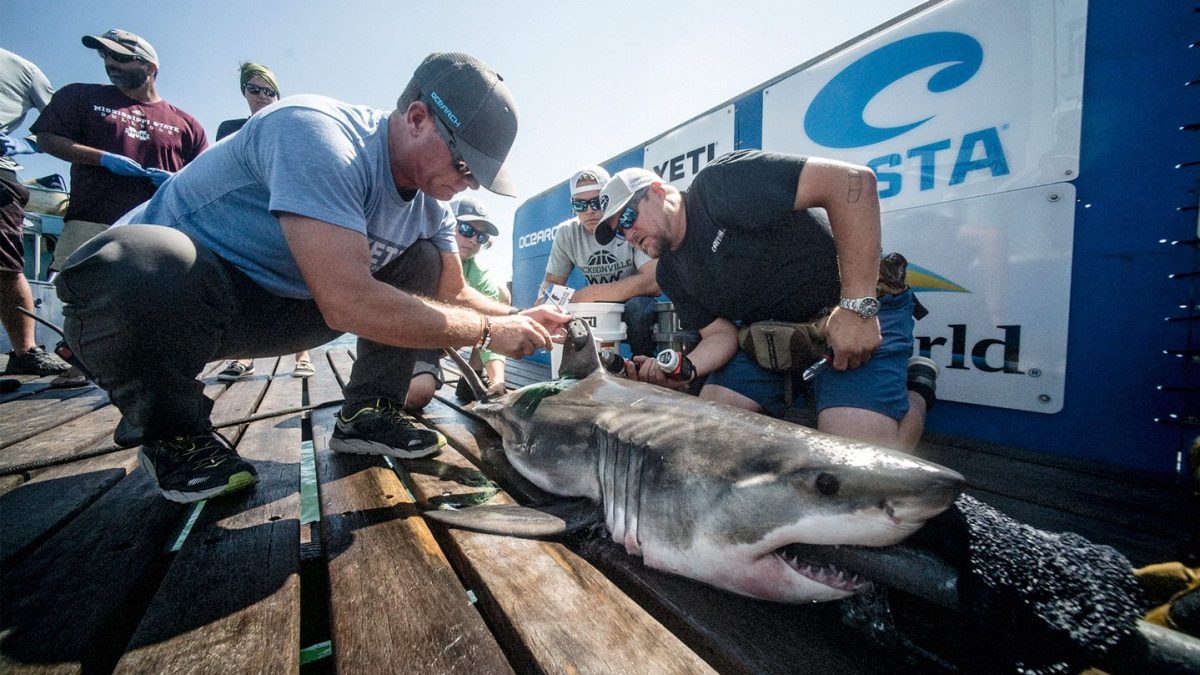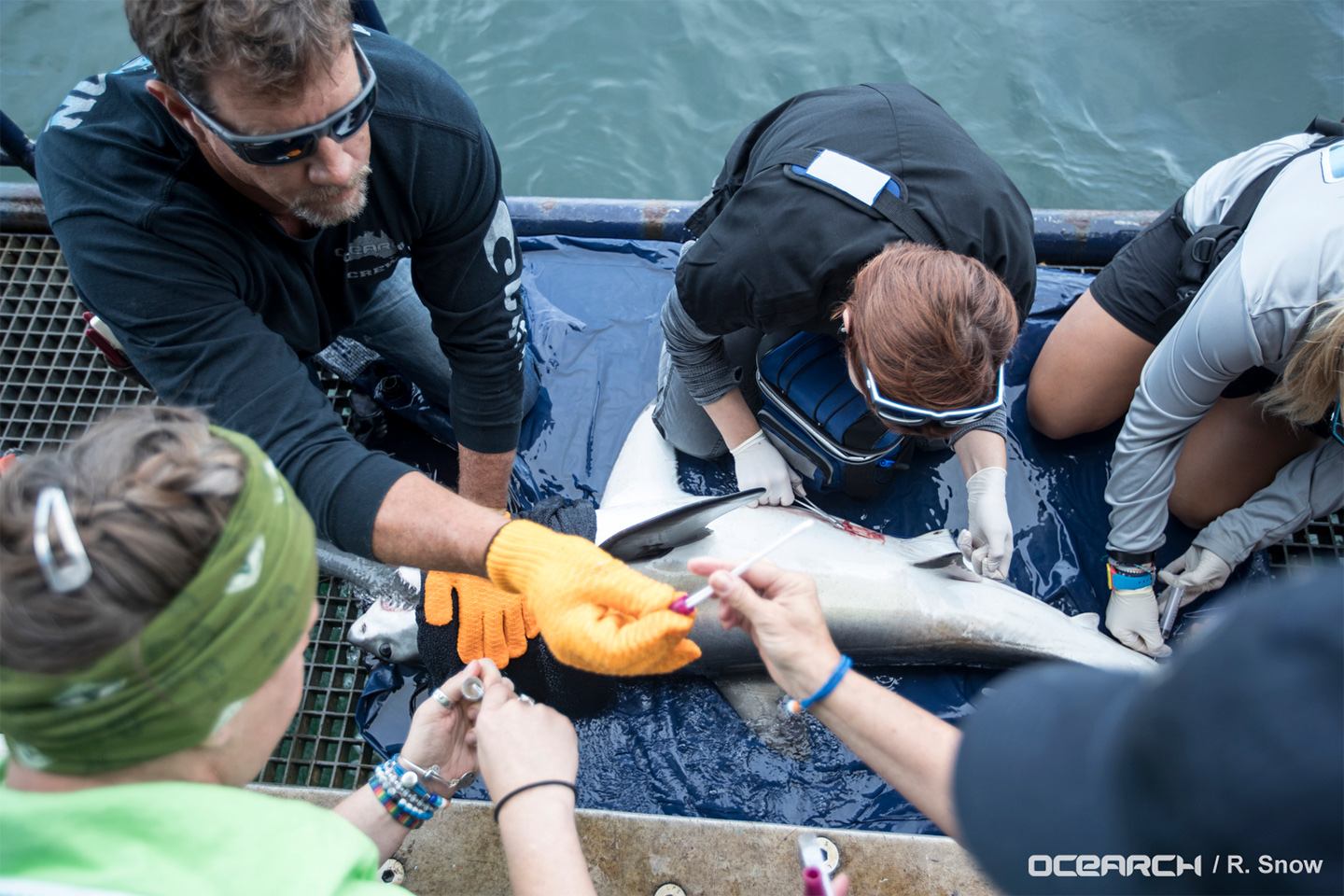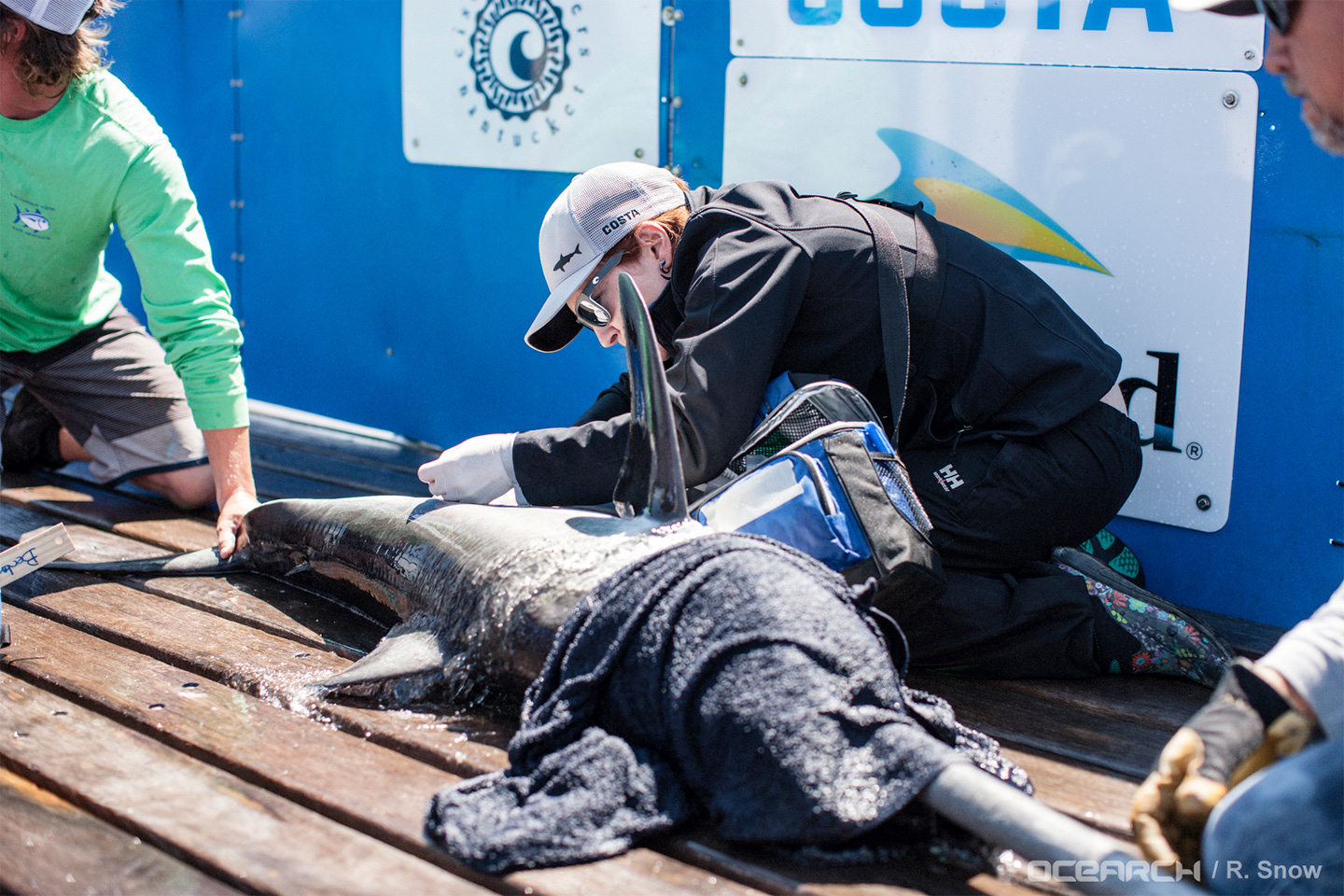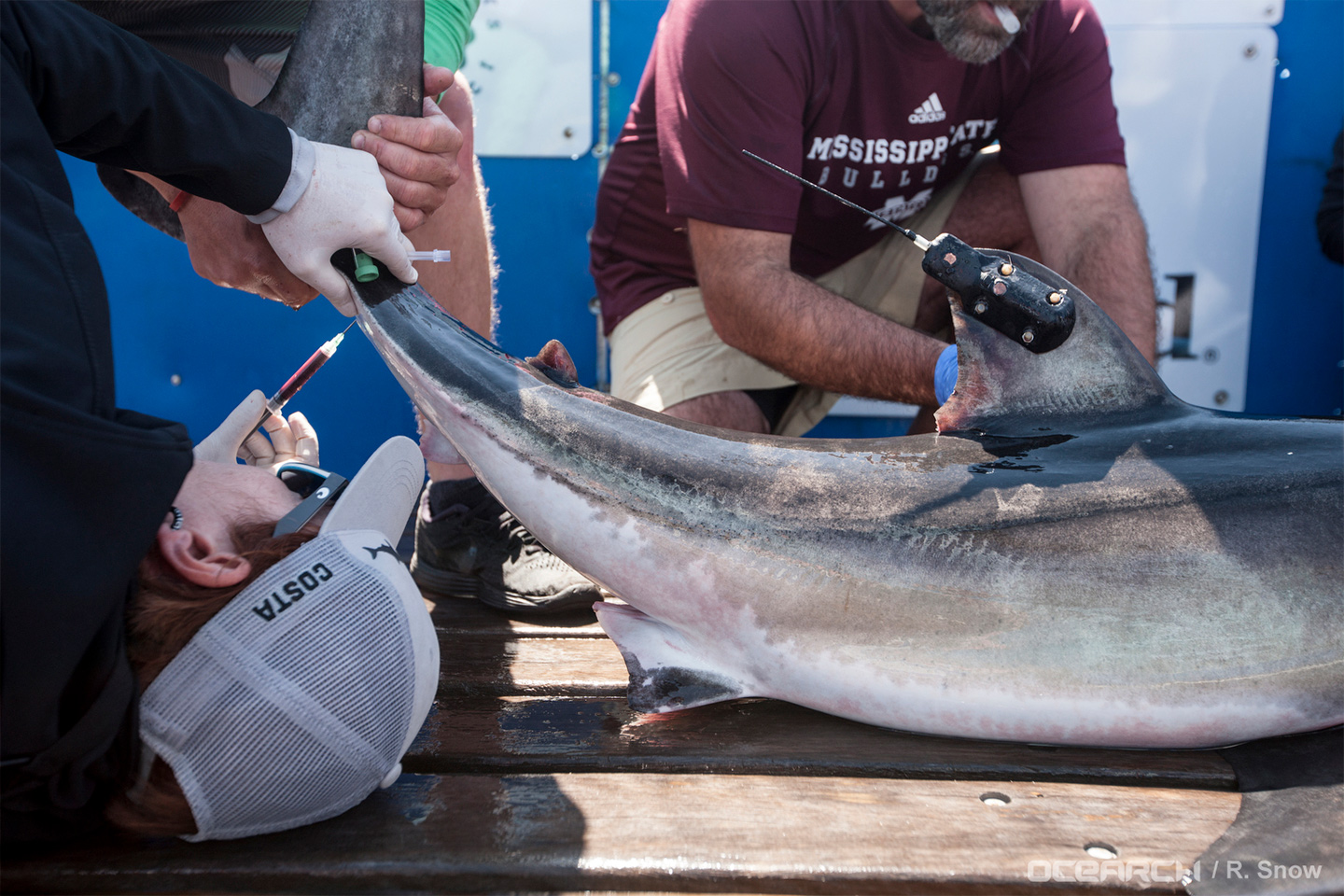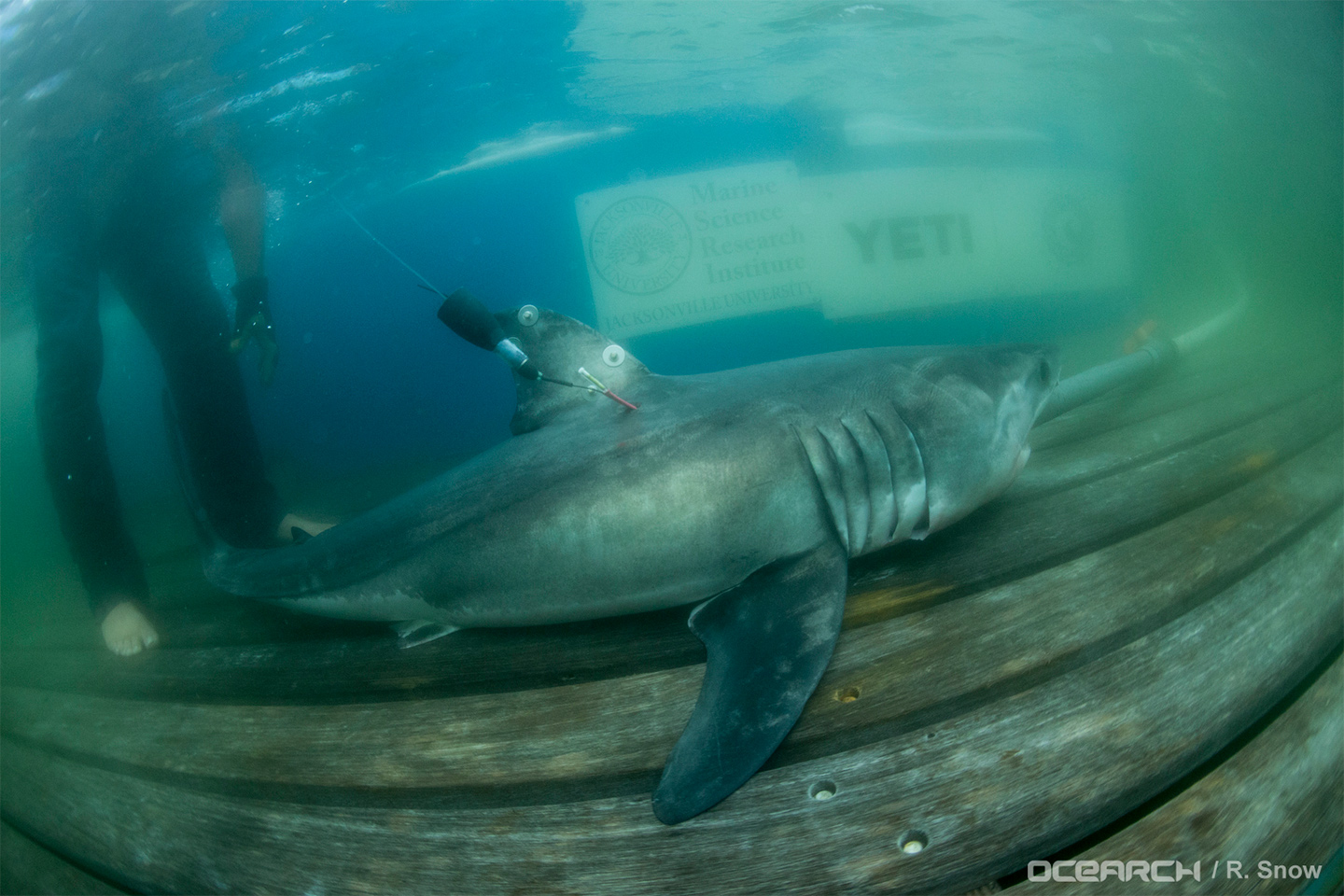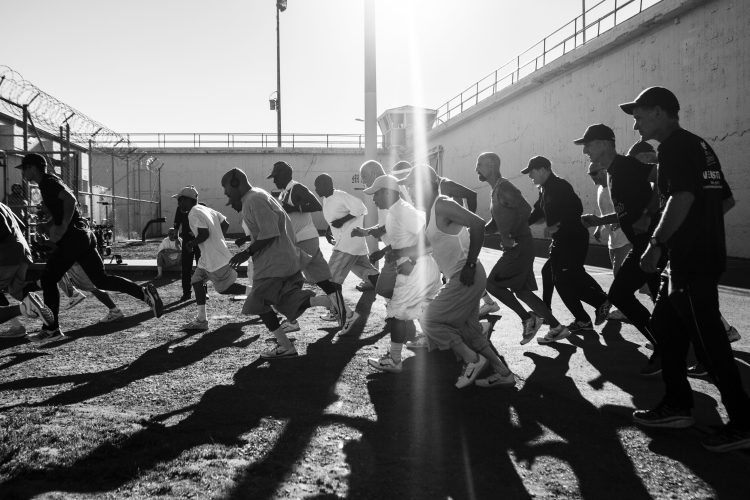Last month, a mere three hours from New York City’s oppressive summer heat and screaming sirens, a research vessel floated in the quiet rolling waters of the Atlantic Ocean off the coast of Long Island. Two young men at the back of the boat manned reels that reached deep into the murky water, their ears pricked, their hands busy. Fog began to creep across the surface of the waves, but sight was less important than sound. The men waited for the wail of a fishing line to tell them they’d hooked what they were looking for: a juvenile great white shark.
The men are not fishing for sport, but for science. They are part of the crew of an OCEARCH research vessel, which pairs professional watermen with researchers. The interests on the boat vary. Tobey Curtis, the lead scientist from the National Oceanic and Atmospheric Administration, is fascinated by shark conservation. Others want to know how, where and when sharks are on the move. Kimberly Ritchie, a scientist and professor at the University of South Carolina at Beaufort, studies the medicinal benefits sharks have to offer.
“They rarely get cancer, they heal their wounds very quickly, there’s a potential for novel drugs or immunity,” Ritchie told RealClearLife. “We have so many antibiotic-resistant bacteria now — MRSA, staph — there’s a need to come up with either new antibiotics from a novel source or some other way altogether, because antibiotics aren’t working anymore.”
Antibiotic research is of extreme importance to soldiers on the battlefield who suffer ragged wounds from explosive devices, then die after the wounds get infected, said Ritchie, who’s already published research on the subject. It’s also a concern for people battling antibiotic-resistant superbugs, including gonorrhea, which are classified by the World Health Organization as a significant threat to public health.
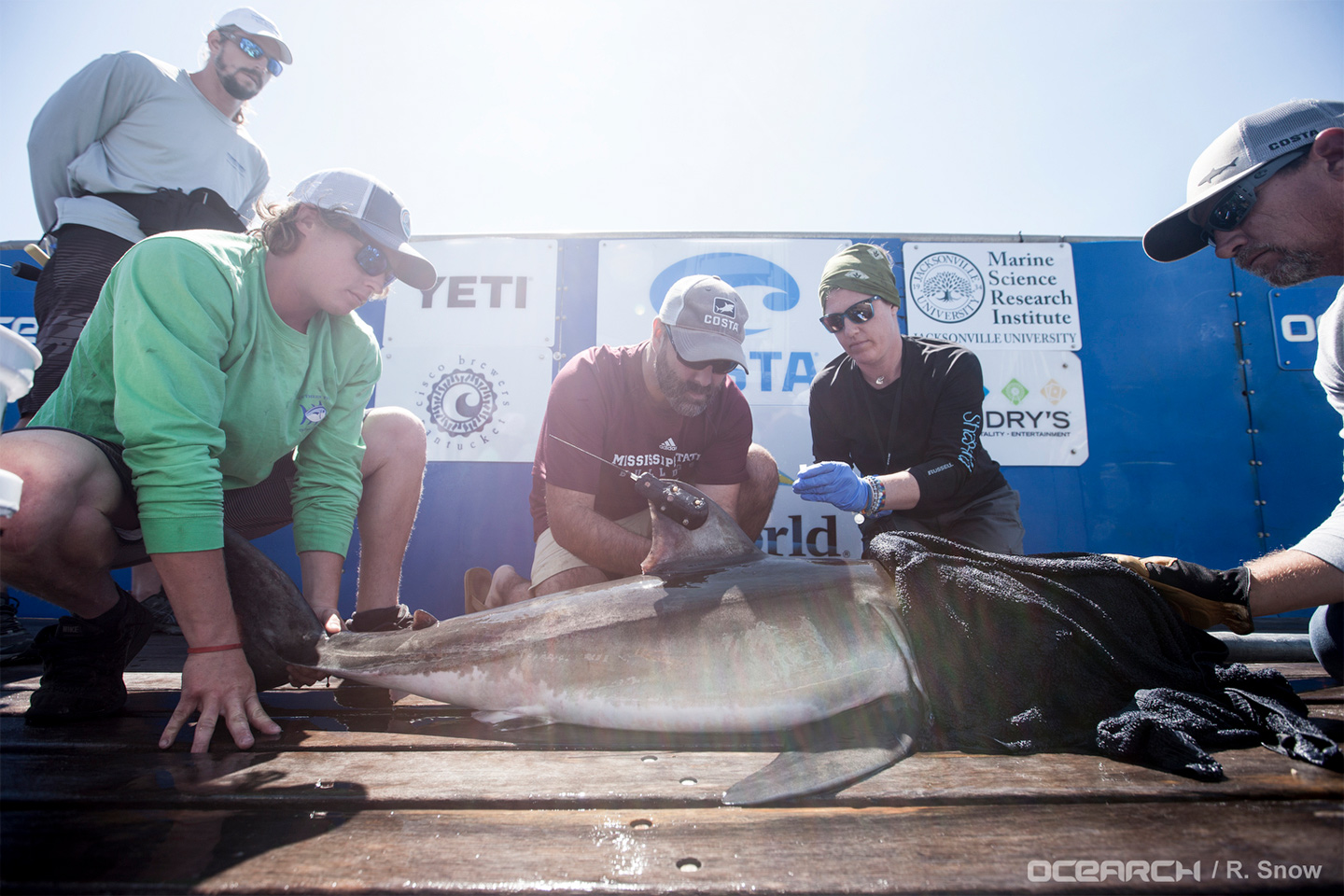
But while Ritchie can decode brilliantly-colored bacteria on different areas of one of the world’s most fearsome predators, she admittedly doesn’t know how to fish for them. There’s also the problem of pulling a two-ton animal with rows of razor-sharp teeth aboard a boat for a short period of time without harming it.
“With these collaborations you get so much more done than you ever could, [rather than] trying to figure out how to fish. We don’t know how to fish. We do microbiology,” Richie said.
That’s where the watermen on the OCEARCH vessel come in. Led by Chris Fischer, the founding chairman and expedition leader of OCEARCH, the crew lends scientists their practical knowledge like navigation, water safety and how to operate the 75,000-pound capacity hydraulic platform designed to lift apex predators out of the ocean and onto the deck.
“You bring those two worlds together: a group of fishermen who are really servants of the scientists and the ocean, to capture things that might be difficult for the scientists, and bring sharks back to them, provide them safe access — then let [the shark] go alive,” Fischer, who’s also a member of the Explorers Club, told RealClearLife. The shark’s tracking data is then open-sourced so the public can see exactly where the sharks are swimming.
“People can engage in conversation around it, ask questions, and even the sharks have a voice, and can be involved with those that want to ask them questions about where they are and what they’re doing,” Fischer said.
But not everyone wants to hear what shark conservationists have to say. The same week RealClearLife went aboard the OCEARCH, a Cape Cod official proposed a “shark hazard mitigation strategy” that includes deploying special traps near popular beaches in Massachusetts after recent incidents involving great white sharks frightened the public. Commissioner Ron Beaty suggested that any great whites found hooked in the traps be shot and discarded at sea, despite researchers calling the proposal “ill-considered” and “indiscriminate,” noting that a similar effort in Australia was ineffective, and eventually discontinued by its government.
A Twitter account claiming to represent Ron Beaty called these concerns “falsely claimed by left-wing environmental extremists,” and said the commissioner is “very concerned about the dangerous risks” that “killer sharks” pose to Cape Cod residents.
Beaty was not available for comment at the time of this article’s publication, but told the Boston Herald he’s in the process of formalizing his proposal and “being proactive” about lowering the possibility of a fatal shark attack in Massachusetts, the last of which occurred in 1936.
“Man-eating sharks” are no joke & despite what left-wing environmental extremists falsely claim, they pose a dangerous public safety risk! pic.twitter.com/WCrCQ6CeCU
— Ron Beaty (@ronbeatyjr) August 28, 2017
Despite their fearsome reputation, the sharks were quiet on the sullen summer afternoon RealClearLife joined the OCEARCH crew for a day. The fishermen chummed the waters, beckoning the great predators to snack on mackerel and bunker, but the only catch came in the early hours of the morning; the lines remained silent in the hours after, despite fishing in a “hotspot.”
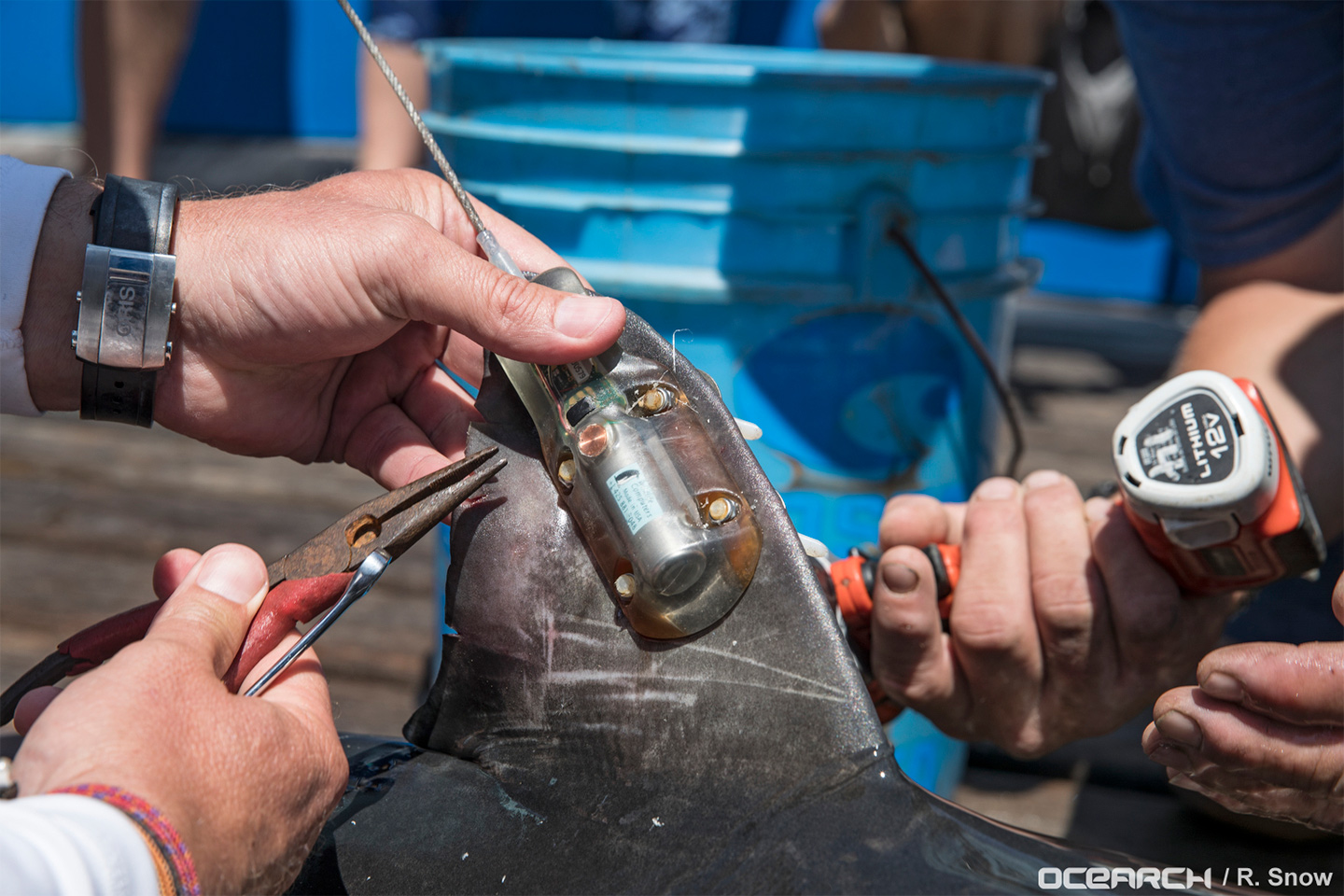
“Everyone here on the East Coast, we are all swimming with white sharks. If you live anywhere between Florida and Maine and you spent any time in the east coast in the Atlantic swimming, you’ve swam with white sharks,” Fischer said. “I have people ask me all the time, “What should I do now that the white shark is there?” No, the white shark’s always been there, we just know now. So it just shows just how uninterested these truly wild, north Atlantic white sharks are in people and boats.”
Not only are they uninterested; Ritchie asserted that without the white sharks, their potential contribution to public health disappears.
“There are a lot of people that don’t care about sharks,” Ritchie said. “This is a potential gold mine, a source of potential antibiotics for human use, and we haven’t even had the chance to study them yet.
“They’re just magnificent animals to study,” Ritchie said. “If sharks go away, we lose that potential.”
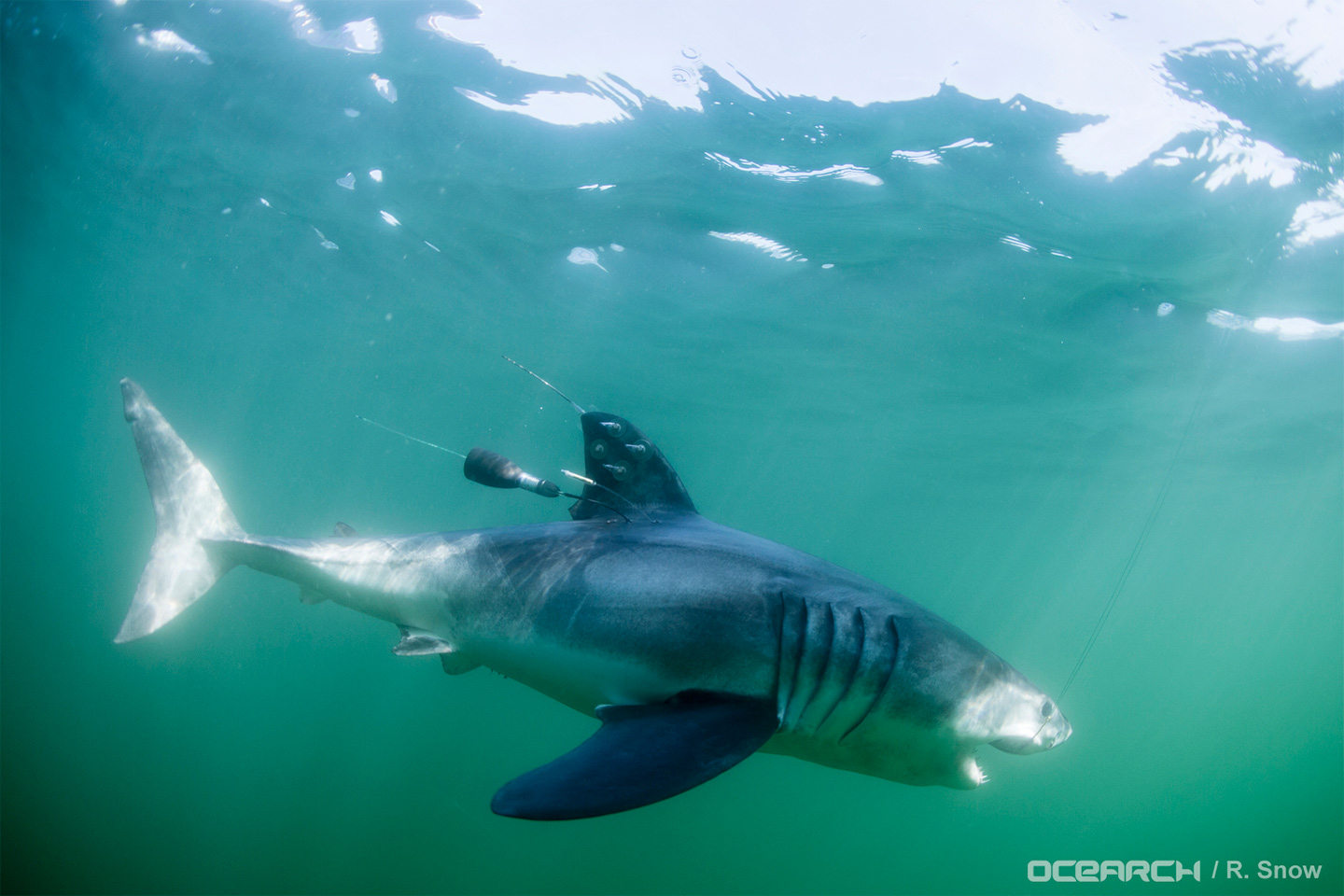
Whether you’re looking to get into shape, or just get out of a funk, The Charge has got you covered. Sign up for our new wellness newsletter today.
